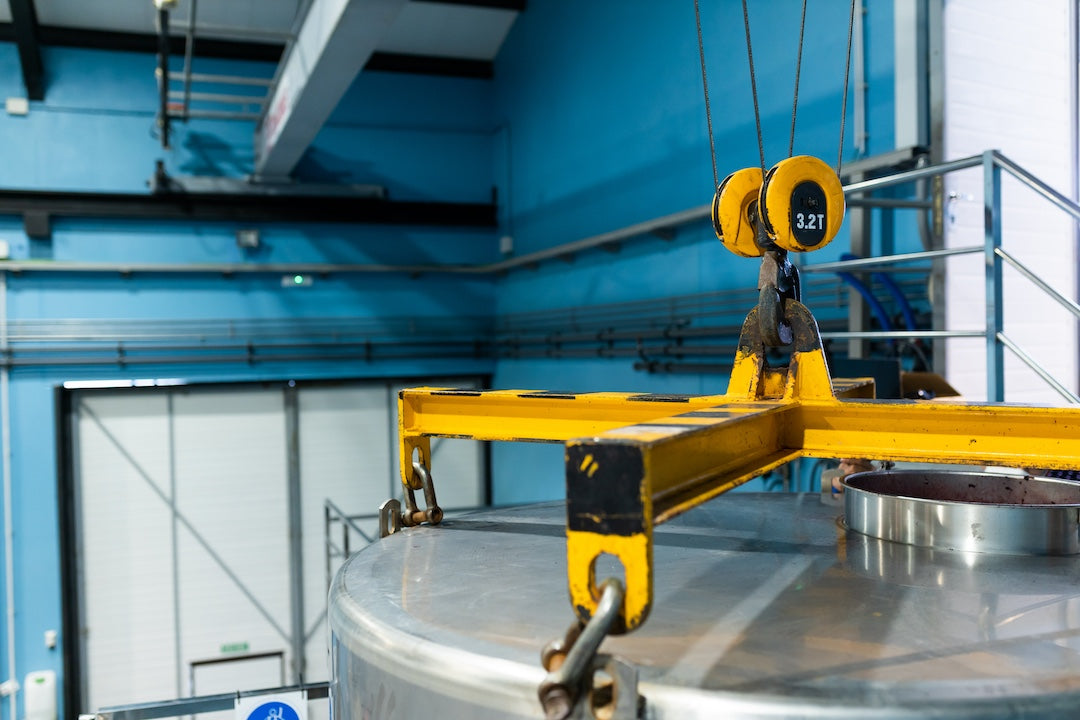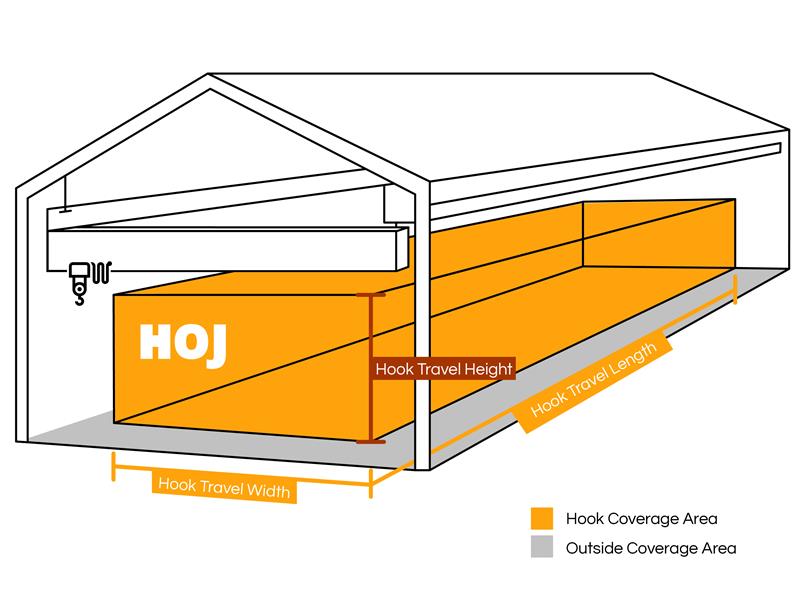Your Cart is Empty

Top Benefits of Automated Warehouse Systems
In logistics and warehousing, efficiency is king. Automated warehouse systems have emerged as a game-changer, offering innovative solutions to traditional challenges. Some examples of these can be a variety of conveyor solutions, automated palletizers/wrappers, and even AMRs. These systems integrate technology to streamline operations, reduce manual labor, and enhance overall performance.
Hoj Innovations is positioned to help you determine if, when and how your business should implement or upgrade to an automated warehouse system.

Key Benefits of Automated Warehouse Systems
Increased Efficiency and Productivity
Automated warehouse systems leverage advanced technologies like robotics, artificial intelligence (AI), and machine learning to overhaul traditional inventory management. These systems enhance the speed and precision of various warehouse operations, such as:
- Picking and Packing: Robots and automated guided vehicles (AGVs) can swiftly navigate through the warehouse, selecting and transporting items, which significantly reduces the time taken for these tasks compared to manual operations.
- Sorting and Handling: Automated systems can sort items more quickly and accurately than human workers, streamlining the flow of goods through the warehouse and reducing bottlenecks.
- Space Optimization: Intelligent software can analyze and allocate warehouse space more efficiently, ensuring that goods are stored compactly and retrieved with minimal delay, thus maximizing the use of available space.
Enhanced Accuracy and Reduced Errors
Automation plays a crucial role in minimizing human errors in inventory management:
- Precise Tracking: Automated systems use technologies like barcoding, RFID scanning, and real-time data analytics to monitor inventory levels accurately, ensuring that records are up-to-date and reliable.
- Order Accuracy: With automated systems, the likelihood of picking and shipping the wrong item is greatly reduced, which enhances customer satisfaction and reduces the costs associated with returns and exchanges.
- Data Analysis and Forecasting: Automated systems can analyze historical data to predict future trends, helping in better inventory management and reducing overstock or stockout situations.
Cost Savings in the Long Term
Though the initial investment in automated warehouse systems can be high, the long-term financial benefits are significant:
- Labor Cost Reduction: Automation reduces the need for a large workforce to manage warehouse operations, thereby saving on labor costs and associated expenses like training and benefits.
- Operational Efficiency: With systems operating around the clock, warehouses can achieve higher throughput with the same or fewer resources, improving the overall financial performance.
- Error Cost Reduction: By minimizing errors in orders and inventory management, companies can save on the costs related to rectifying these errors, such as wasted time, additional shipping, and lost revenue.
Improved Worker Safety
Automated systems enhance safety in the warehouse environment:
- Hazardous Task Automation: Robots and automated machines can take over dangerous tasks, such as lifting heavy objects or operating in unsafe conditions, thereby reducing the risk of accidents and injuries.
- Reduced Human Interaction: With machines handling more tasks, there are fewer opportunities for workplace accidents and injuries, leading to a safer work environment and potentially lower insurance costs.
Scalability and Flexibility
Automated warehouse systems offer scalability and flexibility, which are critical for growth and adaptability:
- Scalable Operations: As the business grows, automated systems can be scaled up to handle increased volumes without the need for proportional increases in labor or space.
- Adaptable to Market Changes: Automation allows for quick adjustments in operations to respond to market changes, such as seasonal fluctuations or sudden increases in demand, ensuring that the business remains competitive and responsive.
Automated warehouse systems provide a range of benefits that can lead to significant improvements in efficiency, accuracy, cost savings, safety, and scalability, all of which are crucial for maintaining a competitive edge in the dynamic field of warehousing and logistics.

Considerations for Implementing Automated Warehouse Systems
Evaluating Cost
The cost of implementing an automated warehouse system is a significant consideration for any business. This includes:
- Initial Investment: The upfront cost of purchasing and installing automated equipment, software, and technology infrastructure.
- Operational Expenses: Ongoing costs related to maintenance, software updates, and training employees to operate the new systems.
- Return on Investment (ROI): Analyzing the potential savings and revenue growth from automation to determine the payback period and overall financial viability.
Assessing Available Space
The physical layout and available space within a warehouse play a critical role in determining the feasibility and type of automation:
- Warehouse Layout: Understanding the current layout to identify areas where automation can be integrated or if modifications are necessary.
- Space Optimization: Considering how automated solutions can maximize the use of existing space, possibly reducing the need for expansion or relocation.
- Infrastructure Needs: Evaluating whether the current facility has the necessary infrastructure (like power supply, network connectivity, etc.) to support automated systems.
Understanding Inventory and Operational Needs
Different types of inventory and operational processes require specific automated solutions:
- Type of Inventory: The nature of the items stored (size, weight, perishability, etc.) will influence the choice of automation technology (e.g., robots, conveyor belts, automated storage and retrieval systems).
- Operational Requirements: The complexity and volume of operations will determine the level and type of automation needed. High-volume, repetitive tasks are ideal for automation, while more intricate processes may require advanced solutions or remain partially manual.
Selecting the Right Technology and Vendor
Choosing the appropriate technology and vendor is crucial for successful automation:
- Technology Fit: Ensuring that the chosen technology integrates well with existing systems and processes, and meets the specific needs of the warehouse operations.
- Vendor Reputation and Support: Selecting a vendor with a strong track record, good customer support, and the ability to provide training and ongoing assistance is vital.
- Future-Proofing: Considering the scalability and adaptability of the technology to future changes in business size and market conditions.
Integration with Existing Processes
The ability to integrate automated systems with current operations and systems is vital:
- Compatibility: Automated systems should be compatible with existing warehouse management software and hardware.
- Transition Plan: Developing a detailed plan for the transition to automation, including timelines, training, and phasing of implementation to minimize disruption.
- Continuous Improvement: Planning for ongoing evaluation and upgrades of the automated system to ensure it continues to meet the evolving needs of the business.
Implementing automated warehouse systems requires careful consideration of costs, available space, specific inventory and operational needs, technology and vendor selection, and integration with existing processes. By addressing these considerations, businesses can ensure a smooth transition to automation and achieve long-term success.

Conclusion
Automated warehouse systems offer numerous benefits, from enhancing efficiency and accuracy to saving costs and improving safety. As technology continues to evolve, the potential for automation in warehousing and logistics will only expand, paving the way for more innovative and efficient practices.








